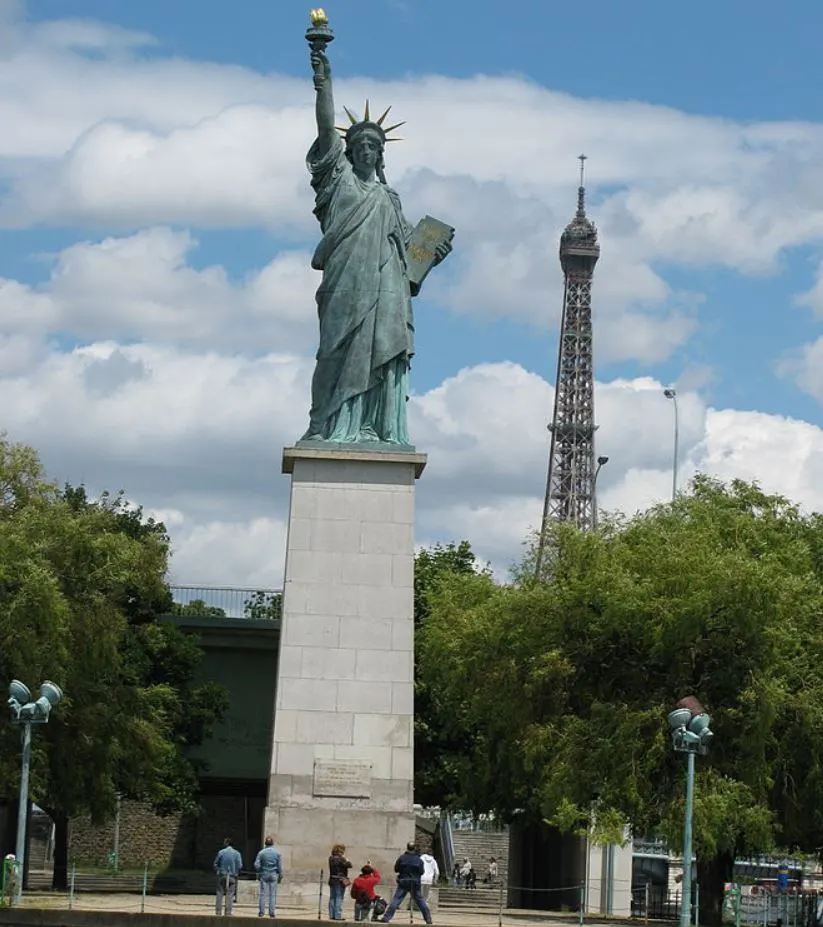One of the most iconic monuments in New York City is situated on Liberty Island in New York Harbor
In this post, we have collected the top 10 of the most fun and interesting Statue of Liberty facts.
1. The statue depicts an ancient Roman goddess
The Statue of Liberty is arguably the most famous monument on the planet. It has been welcoming people arriving at New York Harbor since the late 19th century and was originally a gift from France to the United States.
This amazing monument represents freedom and is officially known as “Liberty Enlightening the World.” Therefore, its sculptor Frédéric Auguste Bartholdi (1834-1904) sought inspiration in ancient Rome.
He found exactly what he was looking for because the ancient Romans had a goddess of freedom named “Libertas.” Remarkably, the ancient Roman goddess was depicted pretty much the same as how the statue eventually turned out to look.

2. The Eiffel Tower’s engineer had a hand in the statue
Sculptor Bartholdi got the help of one of the most renowned engineers in history, the designer of the Eiffel Tower in Paris Gustave Eiffel (1832-1923).
Even though Eiffel created the sketches of the internal structural framework of the statue, it was Norwegian civil engineer Joachim Goschen Giæver (185-1925) who produced the final design and oversaw the work on site.
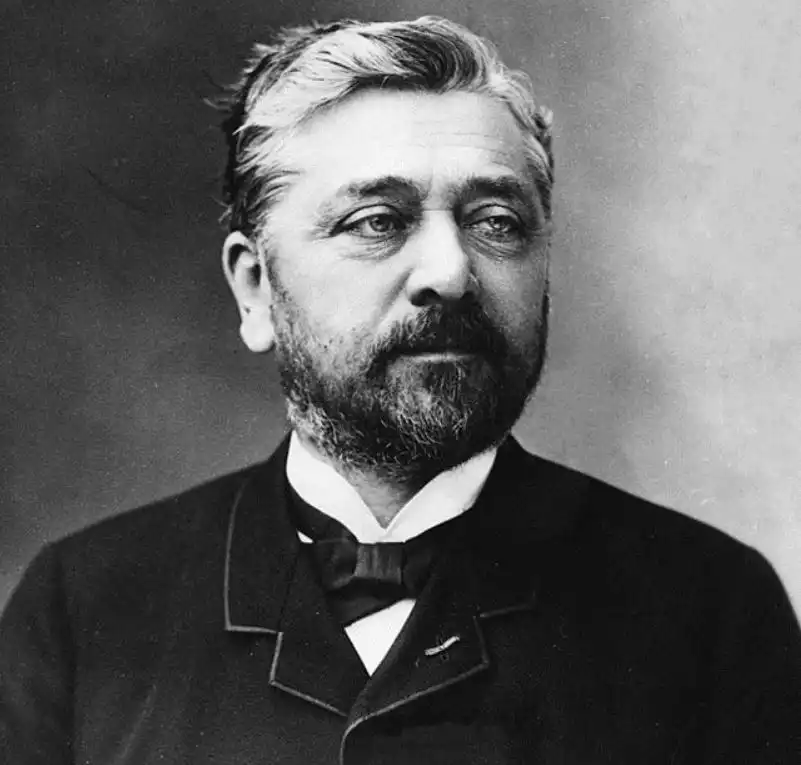
3. The abolition of slavery was the main reason it was created
The original idea was planted into the mind of French sculptor Bartholdi when he had a conversation with Édouard René de Laboulaye (1811-1883), the president of the Anti-Slavery Society of France.
This man was a fervent supporter of the Union in the United States and during dinner and a couple of bottles of wine the discussion headed towards this direction. Eventually, he remarked that a monument in the United States that should be a combined effort of France and the United States and serve as a memorial to their independence.
What is clear today is that his comment was not meant as a proposal to build a monument, but it did eventually encourage him to take action and find support for the idea in the United States.
He integrated multiple symbols related to the abolition of slavery into the statue, including a broken shackle and chain at her feet and a raised right feet which represents progress.
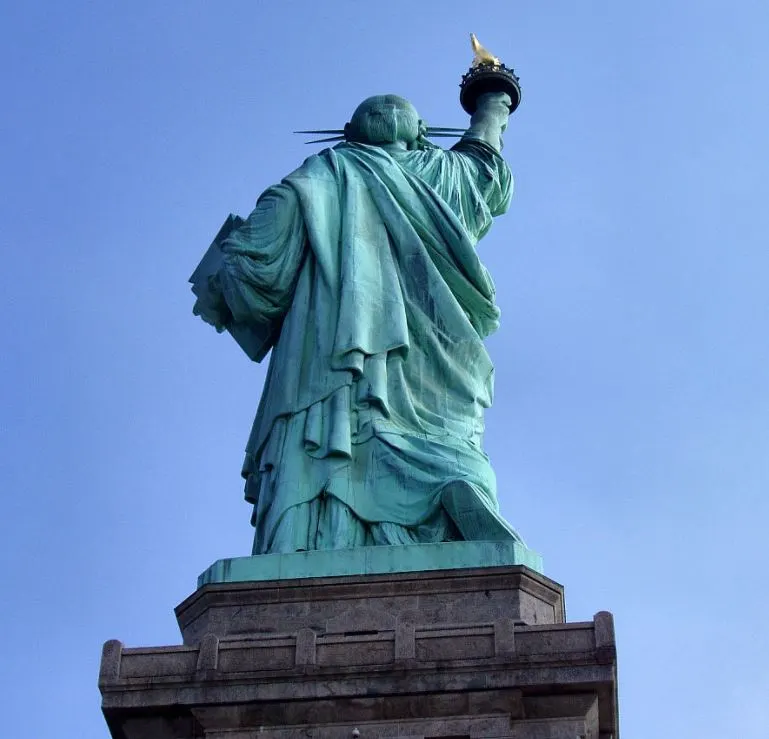
4. The torch-bearing arm was displayed in two locations in the US
The idea didn’t come to fruition until Napoleon III was deposed and the Franco-Prussian War was over in the early 1870s and a more liberal government was installed in France.
Bartholdi made the idea public for the first time in 1875 to the Franco-American Union and they named the statue “La Liberté éclairant le monde” or “Liberty Enlightening the World” right then.
Funds were raised and Bartholdi created the arm and torch of the statue. During a trip to the United States, this initial element of the statue was on public display at the 1876 Centennial Exposition in Philadelphia and Madison Square Park in New York City between 1876 and 1882.

5. The head was exhibited during an event in Paris in 1878
Bartholdi returned to France in 1877 and started working on the most important element of the statue, the head. This was completed in time for the 1878 Paris World’s Fair and it was on public display at this event.
This spectacle allowed for additional fundraising and a lottery was organized as well to collect more funds with about 250,000 francs raised just a year later.
The final push to secure funding was conducted in the United States when publisher Joseph Pulitzer of the New York World newspaper advertised the project and requested donations.
Over 120,000 people donated and even though most of the people gave less than a dollar, the future of the project was secured!

6. The statue featured an innovative construction method
Gustave Eiffel wasn’t the original structural engineer of the project.
During the construction of the arm with torch and head, a man named Eugène Viollet-le-Duc (1814-1879), famously known for restoring dozens of medieval structures in France, was in charge of the structural part.
His idea was to transform the copper skin into a masonry pier, but because he fell ill and died shortly after, he left no indication on how to do that.
Eiffel came up with a clever solution and instead decided to build an iron truss tower to support the statue from the inside. This means that the ultimate symbol of New York was one of the first structures in history that utilized a curtain wall which means that the exterior elements aren’t load-bearing.
He also integrated two spiral staircases which allow visitors to reach the top easily while at the same time providing additional support for the statue.
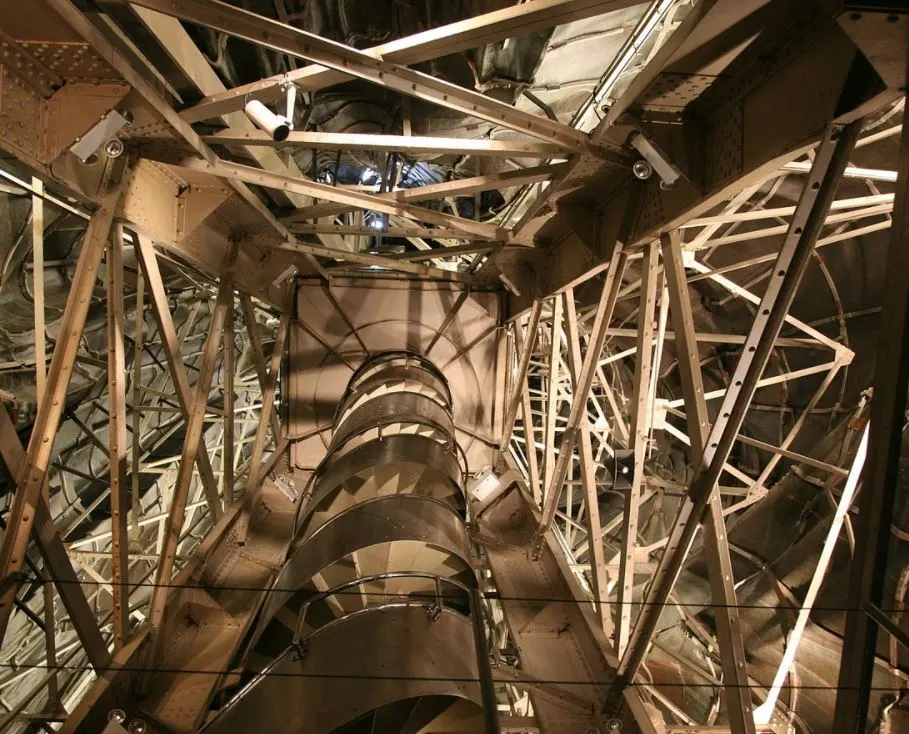
7. The pedestal of the statue integrated multiple architectural styles
Even though the funds for the statue were secured through donations, raising funds for the pedestal turned out to be much more difficult. The US faced an economic depression in the 1870s which also stalled various other projects, including the Washington Monument which wasn’t completed until the year 1884.
Eventually, things turned around in the 1880s and even though the initial height of this structure was reduced from 114 feet (35 meters) to just 89 feet (27 meters), construction started halfway through this decade.
The design was kept relatively simple but it still features classical elements such as Doric Columns and architectural elements derived from Aztec architecture as well. It has the shape of a cut-off pyramid with a square base of 62 feet (19 meters) at the base and 39.4 feet (12 meters) at the top.
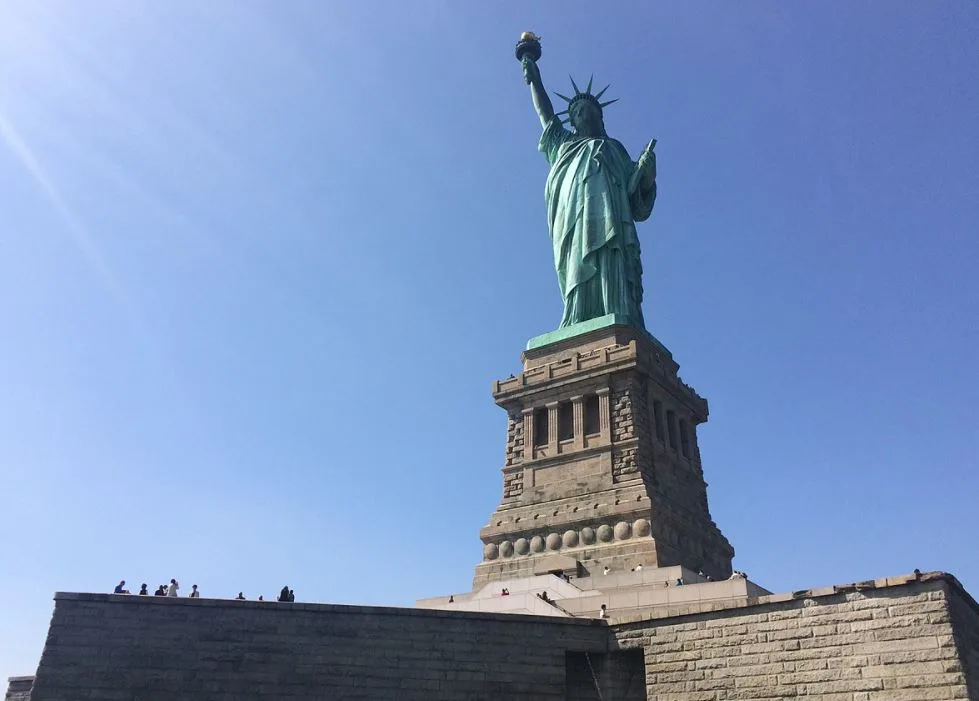
8. The National Monument also includes another island
The statue arrived in New York City by boat from France on June 17, 1885. It was packed in crates but reassembling the statue didn’t happen until the pedestal was completed in April 1886.
The iron framework was assembled first and workers hanging from ropes attached the copper skin of the statue one by one, a massive endeavor because using scaffolding was impossible. President Grover Cleveland officially dedicated the statue on October 26, 1886.
It was turned into a National Monument in 1924 and is referred to as the “Statue of Liberty National Monument.” Remarkably, National Monument includes both Liberty Island and Ellis Island. Apart from the statue it also features the Statue of Liberty Museum and the Ellis Island Immigrant Hospital.
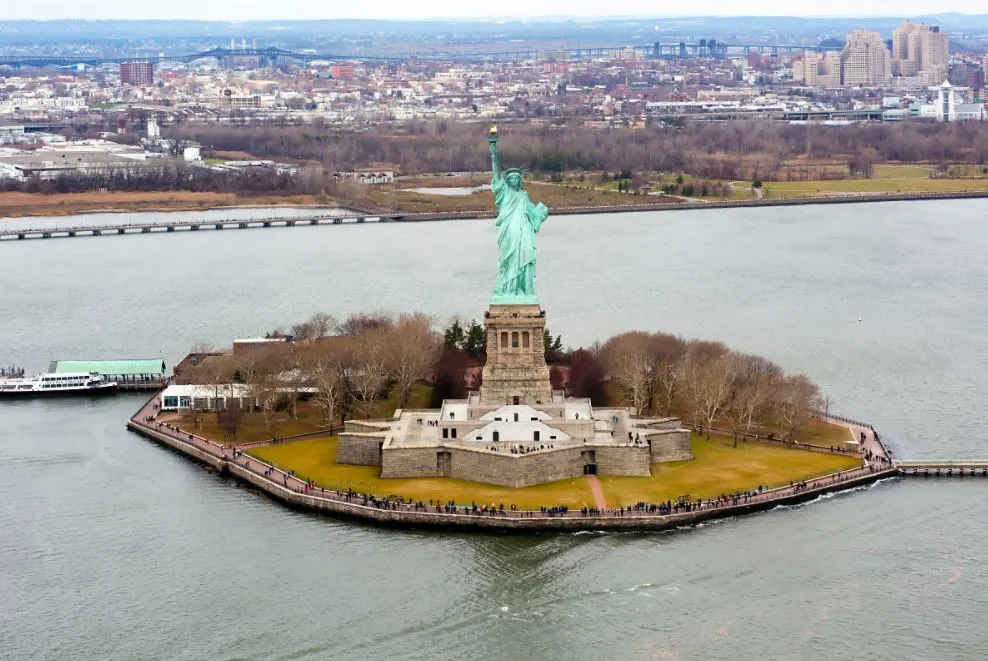
9. The statue’s height from ground level to the tip exceeds 300 feet
The statue is the most prominent landmark in New York for people arriving in the city by boat. This turned it into the ultimate symbol of the United States as it welcomed immigrants arriving here.
The statue itself stands 151 feet 1 inch (46 meters) tall and the pedestal has a total height of 89 feet (27 meters). Including the arm and torch, the statue stands exactly 305 feet 1 inch (93 meters) tall from the ground level to the tip of the torch.
The statue itself also weighs 450,000 pounds or 204.1 tonnes!
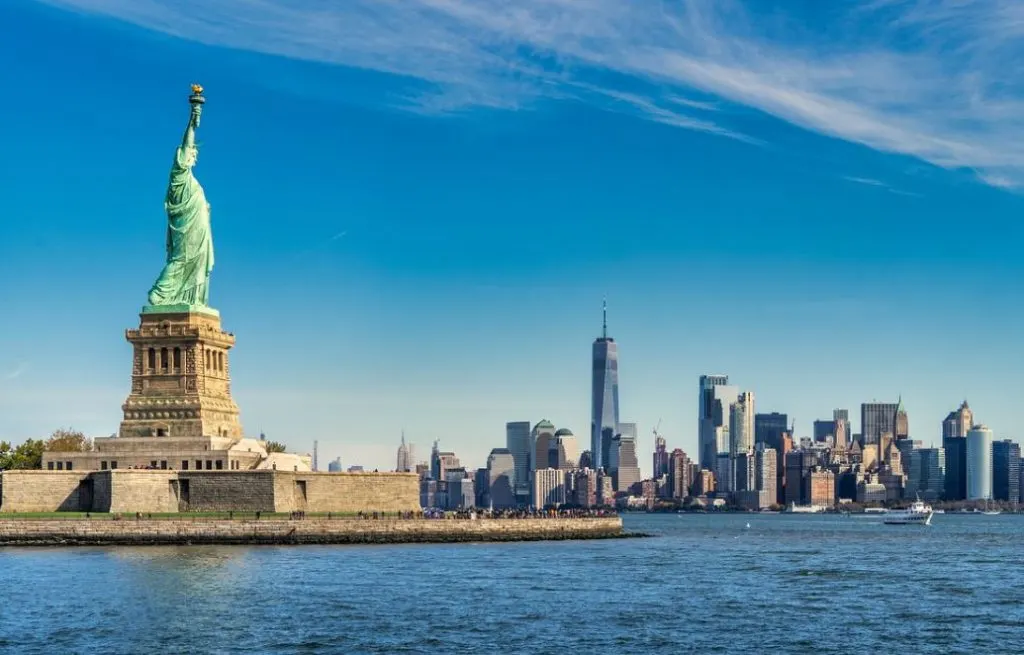
10. A much smaller replica was donated by the US in 1889
The Americans were very much impressed with this remarkable gift from across the pond so the Parisian expatriate community in the US felt obliged to return the favor.
Less than 3 years later, French President Marie François Sadi Carnot inaugurated a replica, something that happened on July 4, 1889. This replica is just 1/4 of the size of the original, though, and is situated on Île aux Cygnes, an artificial island in the Seine River in Paris!
Final fun fact: this replica of the Statue of Liberty originally faced east, toward the Eiffel Tower. It was turned to the west in 1937 for the World Fair in Paris that year. This means that it has faced its bigger sister in New York ever since!
